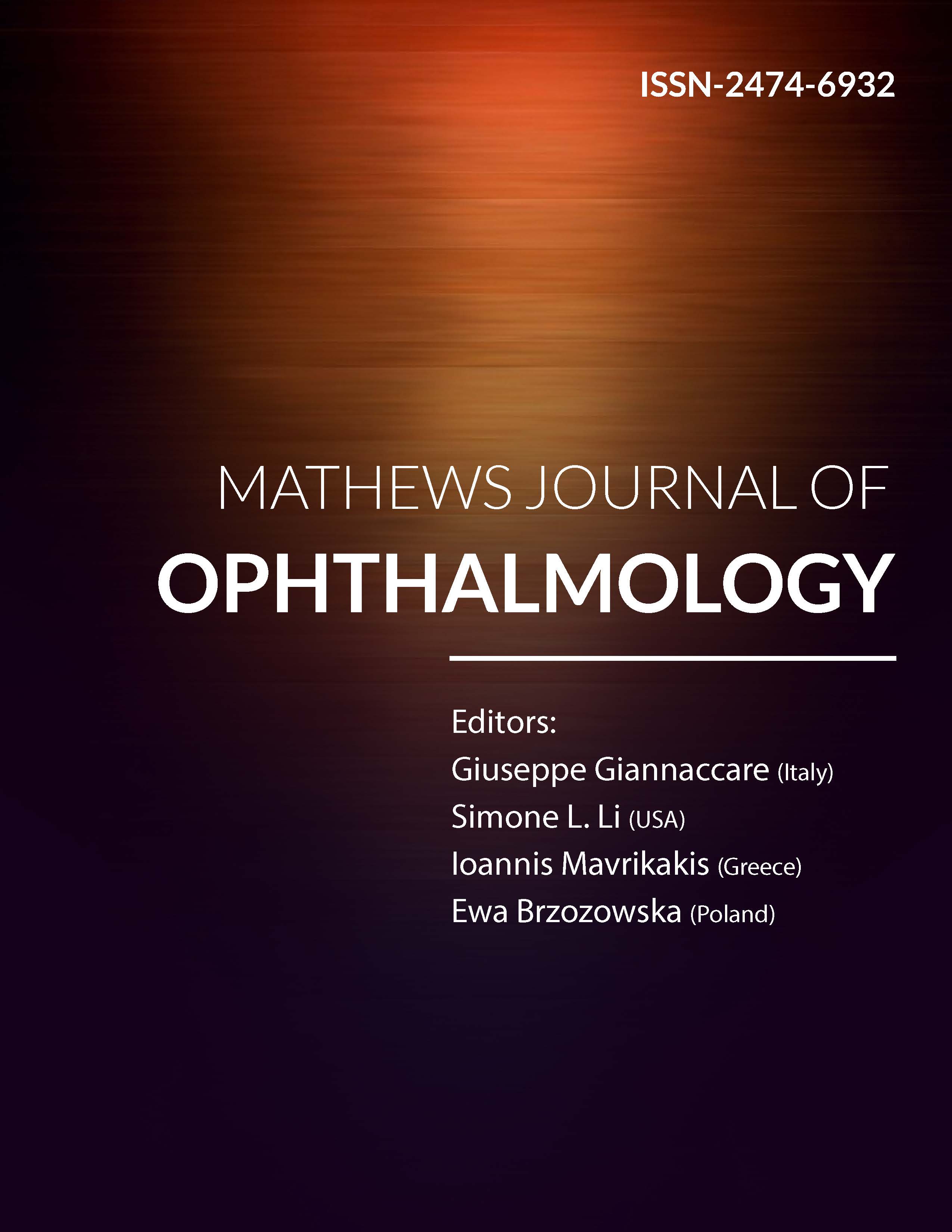
Information Links
Previous Issues Volume 1, Issue 2 - 2016
Prevalence of Low Vision in the Shai-Osudoku District in the Greater Accra Region of Ghana
David Ben Kumah1,Benjamin Brifa Bempong1,Mohammed Abdul-Kabir1,Ronnels Hardour1,Pascal Michel Tchiakpe1,Emmanuel Boateng Baafi1
1Department of Optometry and Visual Science, B21 COS Building, Kwame Nkrumah University of Science and Technology (KNUST), Kumasi, Ghana
Corresponding Author: Benjamin Brifa Bempong, Department of Optometry and Visual Science, B21 COS Building, Kwame Nkrumah University of Science and Technology (KNUST), Kumasi, Ghana, Tel: +233501373363; E-Mail: [email protected]
Received Date: 16 Sep 2016
Accepted Date: 03 Oct 2016
Published Date: 04 Oct 2016
Copyright © 2016 Bempong BB
Citation: Bempong BB, Kumah DB, Abdul-Kabir M, Hardour R, et al. (2016). Prevalence of Low Vision in the Shai-Osudoku District in the Greater Accra Region of Ghana. Mathews J Ophthalmol. 1(2): 007.
ABSTRACT
Background:
Low vision is a major public health concern that needs to be addressed appropriately. However, there are only a few low vision clinics available to low vision patients in most developing countries. The aim of this study was to determine the prevalence and causes of low vision in the Shai-Osudoku district.
Methods:
The research was a cross-sectional study. A two-stage random cluster sampling technique was used to select a sample size of 600 people. Ocular examinations performed included: history recording, visual acuity measurement, reti- noscopy, subjective refraction, visual field test, internal and external examinations.
Results:
A total of 600 participants were seen during the period of the study. Their ages ranged between 11 and 95 years. The commonest cause of low vision was cataract (50.85%), with retinal detachment being the least (1.69%). The rest were uncorrected refractive error (18.64%), glaucoma (11.87%), ARMD (8.48%), and Albinism (3.39%). The prevalence of low vision distribution between the two genders was significant (P< 0.05).
Conclusion:
The study showed a high prevalence of low vision in the Shai-Osudoku District. Cataract, uncorrected refractive errors and glaucoma were the major causes of low vision. The high prevalence rate of low vision could be attributed to the inadequate eye care facilities and lack of eye care professionals in the district.
KEYWORDS
Prevalence; Low vision; Uncorrected Refractive Error; Cataract; Glaucoma.